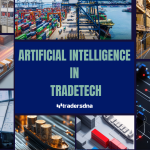The way people work is changing quickly. The World Economic Forum says that 23% of jobs will change by 2027 because of AI, automation, and digital tools. At the same time, PwC reports that global investment in AI could reach $300 billion by 2030. With such big changes, how will factor markets shape the future of work and the role of AI?

Factor markets, where the inputs of production such as labour, land, capital, and entrepreneurship are bought and sold, play a crucial role in driving growth and shaping societies.
Traditionally, these markets determined wages, rents, interest, and profits. But with AI becoming central to modern economies, the structure of factor markets is changing rapidly.
The question is not just how businesses use AI, but how AI itself is reshaping the very supply and demand of production factors.
From gig work platforms to cloud computing and from AI-driven hiring systems to smart factories, the factor market is redefining the future of work and the nature of capital investment.
Factor Markets and the Evolution of Work
One of the biggest impacts of factor markets in the AI age is on labour.
- Labour demand shifts: Many repetitive and manual tasks are being automated, reducing the demand for low-skill labour while increasing demand for AI specialists, data scientists, and engineers.
- Rise of gig and remote work: Platforms like Upwork, Fiverr, and AI-driven matching tools have created new forms of flexible employment, where labour is more globally distributed.
- Reskilling and lifelong learning: As AI takes over old roles, workers must upskill in digital literacy, critical thinking, and creativity, skills that are harder to automate.
In essence, the labour side of factor markets is no longer local but increasingly global, digital, and dynamic.
Capital in the Age of AI
The second major component of factor markets is capital. In 2025, capital is being reshaped by digital transformation:
- Data as capital: In modern economies, data is becoming as important as money. Businesses invest heavily in acquiring, processing, and securing data to train AI systems.
- Cloud computing and AI tools: Instead of traditional machinery, firms now allocate capital towards servers, algorithms, and subscription-based AI platforms.
- Venture capital and AI startups: Investors are pouring billions into AI-driven ventures, recognising their long-term value.
Capital in the AI economy is more intangible than ever, with intellectual property, software, and data assets driving productivity.
Land and Digital Space as Factors
While land has historically referred to natural resources and physical space, in the AI-driven factor market, the definition is expanding.
- Digital real estate: Cloud storage, domain names, and metaverse spaces are becoming valuable assets.
- Energy resources: AI systems require enormous computing power, which in turn needs energy. Access to renewable energy is becoming a strategic advantage.
- Smart infrastructure: From data centres to 5G towers, modern land use is increasingly tied to digital connectivity.
This shift shows how land in factor markets is no longer only about physical territory but also about access to digital and technological infrastructure.
Entrepreneurship as a Driving Force
Entrepreneurship remains a key element of factor markets, but AI is altering how entrepreneurs create and scale businesses.
- AI-powered innovation: Startups use AI for everything from predictive analytics to product development.
- Lower entry barriers: Entrepreneurs can access AI tools cheaply, levelling the playing field for smaller businesses.
- Global competition: With AI tools available worldwide, entrepreneurs face both greater opportunities and tougher competition.
Entrepreneurship in AI-driven factor markets is less about owning machines and more about leveraging data and digital ecosystems effectively.
How AI Transforms Factor Market Dynamics
AI not only change the individual factors; it also reshapes their interaction within factor markets:
- Wage setting and automation pressure: Labour markets see wage polarisation, with high-skilled workers earning more and low-skilled workers facing stagnation.
- Capital substitution for labour: AI is a new form of capital that replaces some labour while creating new opportunities in advanced sectors.
- Globalisation 2.0: Digital factor markets enable companies to hire globally, allocate resources digitally, and compete across borders without physical presence.
- Efficiency and productivity gains: Factor markets driven by AI become more efficient, as algorithms allocate resources more precisely.
Challenges for Workers and Businesses
While AI enhances productivity, it also raises concerns for factor markets:
- Job displacement: Many traditional roles in manufacturing, transport, and clerical work are being replaced by AI.
- Inequality: Wage gaps may widen as demand for AI-skilled labour rises.
- Ethical concerns: Bias in AI hiring systems can distort labour markets.
- Capital concentration: Large tech firms dominate AI infrastructure, raising barriers for smaller firms.
Balancing these challenges is essential for sustainable factor market development.
Policy and Regulation in Factor Markets
Governments play a vital role in shaping the future of factor markets in the AI era. Possible measures include:
- Reskilling initiatives to prepare workers for AI-driven jobs.
- Tax policies that ensure fair distribution of AI-driven capital gains.
- Antitrust regulation to prevent monopolisation of AI tools and infrastructure.
- Digital labour rights to protect gig workers and remote employees.
The right mix of policies can ensure that factor markets remain inclusive and dynamic in the AI-driven economy.
Case Studies
AI in Labour Markets- In India, AI-enabled job platforms such as Apna and Naukri.com are connecting millions of workers to opportunities. These platforms use AI to match skills with employer needs, making the factor market more efficient while also exposing gaps in worker training.
AI and Capital Allocation- Global venture capital in AI startups surpassed $60 billion in 2024, with a focus on generative AI, robotics, and healthcare solutions. This shows how capital markets are adjusting to prioritise AI-intensive ventures, influencing overall economic direction.
Smart Cities and Land Use- Singapore is a prime example of how AI-driven factor markets are shaping land use. Its smart city initiatives use AI to optimise energy, transport, and housing, turning limited land into a highly productive resource.
The Future of Work in AI-Driven Factor Markets
By 2030, factor markets will look very different:
- 50% of tasks could be automated, according to McKinsey.
- Demand for STEM and creative jobs will grow significantly.
- AI will make factor markets more global, with companies hiring talent and sourcing capital across borders digitally.
The future of work is not about machines replacing humans but about reconfiguring factor markets to balance human creativity with machine efficiency.
Factor markets are the unseen engine of the global economy. In 2025, their transformation under AI is reshaping labour, capital, land, and entrepreneurship in ways both exciting and challenging. Businesses, governments, and workers must adapt by embracing reskilling, fair policies, and innovative thinking.
The role of factor markets in shaping the future of work and AI is clear: they are not just adjusting to AI but actively creating the conditions for how AI will be integrated into our economies and societies.

Shikha Negi is a Content Writer at ztudium with expertise in writing and proofreading content. Having created more than 500 articles encompassing a diverse range of educational topics, from breaking news to in-depth analysis and long-form content, Shikha has a deep understanding of emerging trends in business, technology (including AI, blockchain, and the metaverse), and societal shifts, As the author at Sarvgyan News, Shikha has demonstrated expertise in crafting engaging and informative content tailored for various audiences, including students, educators, and professionals.









